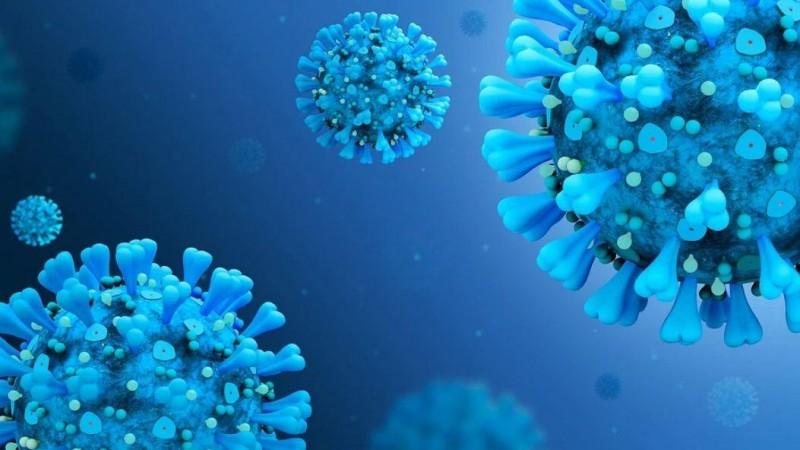The SARS-CoV-2 coronavirus has been found to mutate numerous times over the course of the ongoing COVID-19 pandemic. These mutations have given rise to variants—particularly variants of concern (VOCs)—that have evolved to become more lethal than the original virus. The Alpha variant (B1.1.7-UK), a VOC, is a result of such alterations. Now, a new study has reported that the deletion of two amino acids has enabled the variant to overcome the flaws in its original form and become more infective.
According to the multi-institutional study, the deletion of two amino acids—H69/V70—from its notorious spike protein helps it invade cells better and infect them with improved efficiency. It was also found that the deletion is prevalent in over 600,000 SARS-CoV-2 genome sequences worldwide and has witnessed a massive expansion, particularly in Africa, Asia, and Europe. The study was published in the journal Cell Reports.
"Although we first saw this mutation in an immunocompromised patient and then in the Kent - now 'Alpha' - variant, when we looked at samples from around the world, we saw that this mutation has occurred and spread multiple times independently," said Dr. Ravi Gupta, senior author of the study, in a statement.
Evolving Into More Lethal Variants

It is natural for viruses such as the SARS-CoV-2 to mutate as they spread and circulate among different populations. As the novel coronavirus replicates within cells, errors developed within its genetic composition lead to its mutation. While some of these acquired variations make them more infectious or transmissible, others enable its evasion from immune responses, while some alterations are of no consequence.
"When viruses replicate, any mutations they acquire can act as a double-edged sword: a mutation that enables the virus to evade the immune system might, for example, affect how well it is able to replicate," explained Dr. Gupta.
As of May 2021, four variants of SARS-CoV-2 have been declared as VOCs by the WHO—Alpha (B.1.1.7-UK), Beta (B.1.351-South Africa), Delta (B.1.617.2), and Gamma (P.1-Brazil). Most of the mutations in these newer variants are concentrated in the 'spike' or 'S-protein' (a glycoprotein structure on its surface) that the virus uses to gain entry into cells. The spike binds with the ACE2 receptor—an enzyme found on the surface of certain cell types—to invade and infect cells, and turn them into viral protein-producing factories for its replication. These mutations are particularly concentrated in the RBD (receptor binding domain) of the spike—the section of the spike that enables its docking with the cell.
Mutation of Concern

Scientists from Cambridge University (one of the collaborating institutions) first observed the evolution of the SARS-CoV-2 virus towards the end of 2020 in an immunocompromised patient receiving treatment with convalescent plasma. A particular mutation—the deletion of two amino acids (H69/V70) in the spike protein—caught their attention. Eventually, this deletion was observed in the now dreaded Alpha variant that brought the UK to a standstill.
For the study, the authors used an engineered 'pseudotype virus'—a non-fatal virus that possesses SARS-CoV-2 spike proteins with the H69/V70 deletion. They examined the manner in which the spike interacted with host cells and tried to ascertain the reason behind the importance of this mutation. The virus was pitted against blood sera obtained from fifteen individuals who had recovered from COVID-19.
Deletion That Overcomes Weaknesses

The team learnt that the deletion of the two amino acids did not permit the virus from evading neutralizing antibodies acquired through vaccination, or infection. However, the scientists found that the deletion endowed the virus with double the infectivity (i.e) the pathogen was able to penetrate and infect cells with twice the efficiency. This was on account of the virus particles containing the deletion carrying a larger number of mature spikes on their surface. This lets the virus multiply effectively, even when it possesses other mutations which may otherwise impede its effectiveness.
"What we saw with the H69/V70 deletion was that in some cases, the deletion helped the virus compensate for the negative effects that came with other mutations which allowed the virus to escape the immune response. In other words, the deletion allowed these variants to have their cake and eat it - they were both better at escaping immunity and more infectious," highlighted Dr. Gupta.
Talking about the effect of the deletion of the two amino acids, Dr. Dalan Bailey, co-lead author of the study, averred, "In evolutionary terms, when a virus develops a weakness, it can lead to its demise, but the H69/V70 deletion means that the virus is able to mutate further than it otherwise would. This is likely to explain why these deletions are now so widespread."

















